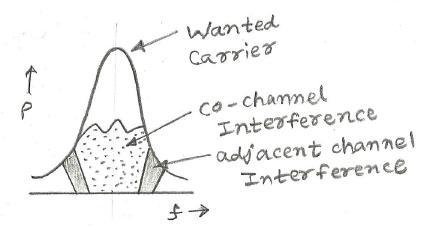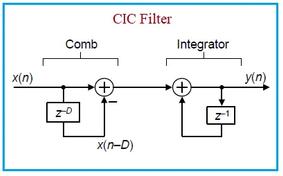Understanding Different Types of Interference in Communication Systems
Advertisement
This article describes various types of interference encountered in communication systems. The common types include Adjacent Channel Interference (ACI), Co-channel Interference (CCI), Electromagnetic Interference (EMI), Inter Carrier Interference (ICI), Inter Symbol Interference (ISI), light interference, and sound interference.
Introduction
The term “interference” can be applied to many domains, including communication, entertainment, science, sports, politics, and even personal life. Here, we’ll focus on types of interference relevant to the field of communication.
What is Interference?
Definitions of interference can vary:
- In communication, interference leads to poor quality pictures or sounds on TVs, radios, or mobile phones. These systems rely on Electromagnetic (EM) waves for transmission.
- In daily life or politics, interference refers to intervening in something.
- In science, interference describes how light, sound, or EM waves disrupt a desired communication path.
- The term “interference” can also be defined based on specific situations and scenarios.
Types of Interference
Interference can be categorized in several ways:
- Based on signal spacing: Co-channel and Adjacent Channel interference are two common types. These are often observed in single-carrier transmission systems like satellite, GSM, and microwave.
- Based on signal type: Electromagnetic, sound, and light interference fall into this category.
- In Multi-carrier systems: OFDM and OFDMA techniques are used in these systems, where ICI and ISI types of interferences are observed.
Let’s delve into these different types of interference in communication.
Co-Channel Interference (CCI)
Co-channel interference occurs when two or more wireless systems transmit on the same frequency, causing disruption.
To handle a large number of calls with a limited number of channels, cellular systems employ frequency reuse. This means the same frequency is reused in multiple cells within their boundaries without causing significant interference. These cells are known as co-channel cells.

To reduce co-channel interference, co-channel cells must be separated by a minimum distance. When cells are approximately the same size:
- Co-channel interference is independent of transmit power.
- It’s a function of the cell’s radius (R) and the distance (D) to the center of the nearest co-channel cell.
- Increasing the ratio Q (= D/R) reduces interference.
- Q is known as the co-channel reuse ratio.
- For hexagonal cell geometry, Q = D/R = (3*N)^0.5
- A larger Q improves transmission quality by reducing co-channel interference.
Adjacent Channel Interference (ACI)
Adjacent Channel Interference is caused by signals from adjacent frequencies leaking into the desired channel.
This leakage is due to imperfect filters and the near-far effect. ACI can be reduced through careful filtering and channel assignments during RF planning. To achieve this, a sufficient frequency separation is maintained between channels.
It’s also crucial to ensure that each mobile device transmits at the lowest power necessary to maintain a good quality link.
Electromagnetic Interference (EMI)
Electromagnetic Interference (EMI) occurs when an EM signal at one frequency interferes with an EM signal at the same or another frequency.
Electromagnetic waves consist of perpendicular electric and magnetic fields. These waves travel in a vacuum at approximately 3 x 10^8 m/sec.
EMI can occur between systems operating at the same frequencies (co-channel) or at different frequencies (adjacent/alternate channel interference).
Sound Interference
Sound waves, produced and detected by ultrasonic transducers, travel through the air at approximately 344 m/sec at 20°C.
Two sound waves can cause constructive or destructive interference depending on whether they are in phase or out of phase, respectively.
For example, the sound produced by speakers can interfere with normal communication between people. Similarly, other sound-producing devices can cause interference.
Light Interference
Light interference occurs when light signals at different or the same wavelengths interfere with each other. Light signals can also interfere with other communication systems using different transmission media.
The speed of light in a vacuum is approximately 186,282 miles/second (299,792 km/sec). The normal functioning of light communication can be disrupted by oil on water or thin soap bubbles.
Light waves can interfere with each other through the addition and subtraction of different waves when they overlap, whether in phase or out of phase.
Inter Carrier Interference (ICI)

In OFDM, carriers are densely packed such that the peak of one sub-carrier aligns with the null of other sub-carriers, a concept known as orthogonality. In essence, for efficient OFDM modulation, subcarriers should be orthogonal to each other.
Inter Carrier Interference (ICI) arises when sub-carriers lose orthogonality. This typically occurs due to:
- The delay spread of the radio channel exceeding the Cyclic Prefix (CP) interval (i.e., guard interval).
- Frequency offset at the receiver.
ICI can be reduced or mitigated by estimating and correcting for frequency offset and adjusting sub-carrier spacing accordingly.
Inter Symbol Interference (ISI)

In OFDM-based systems, transmission occurs symbol by symbol. Before transmission, symbols are packed with complex modulated data. Cyclic Prefix (CP) is then appended to each OFDM symbol.
As these symbols travel, the path from transmitter to receiver introduces delay spread in the time domain. This causes the OFDM symbol to spread out and interfere with consecutive OFDM symbols, resulting in Inter Symbol Interference (ISI).
ISI can be mitigated or reduced using the Cyclic Prefix (CP) concept, where the CP length is chosen to be greater than the channel delay spread.
For a deeper understanding, consult resources that explain the difference between ICI and ISI.
 RF
RF


